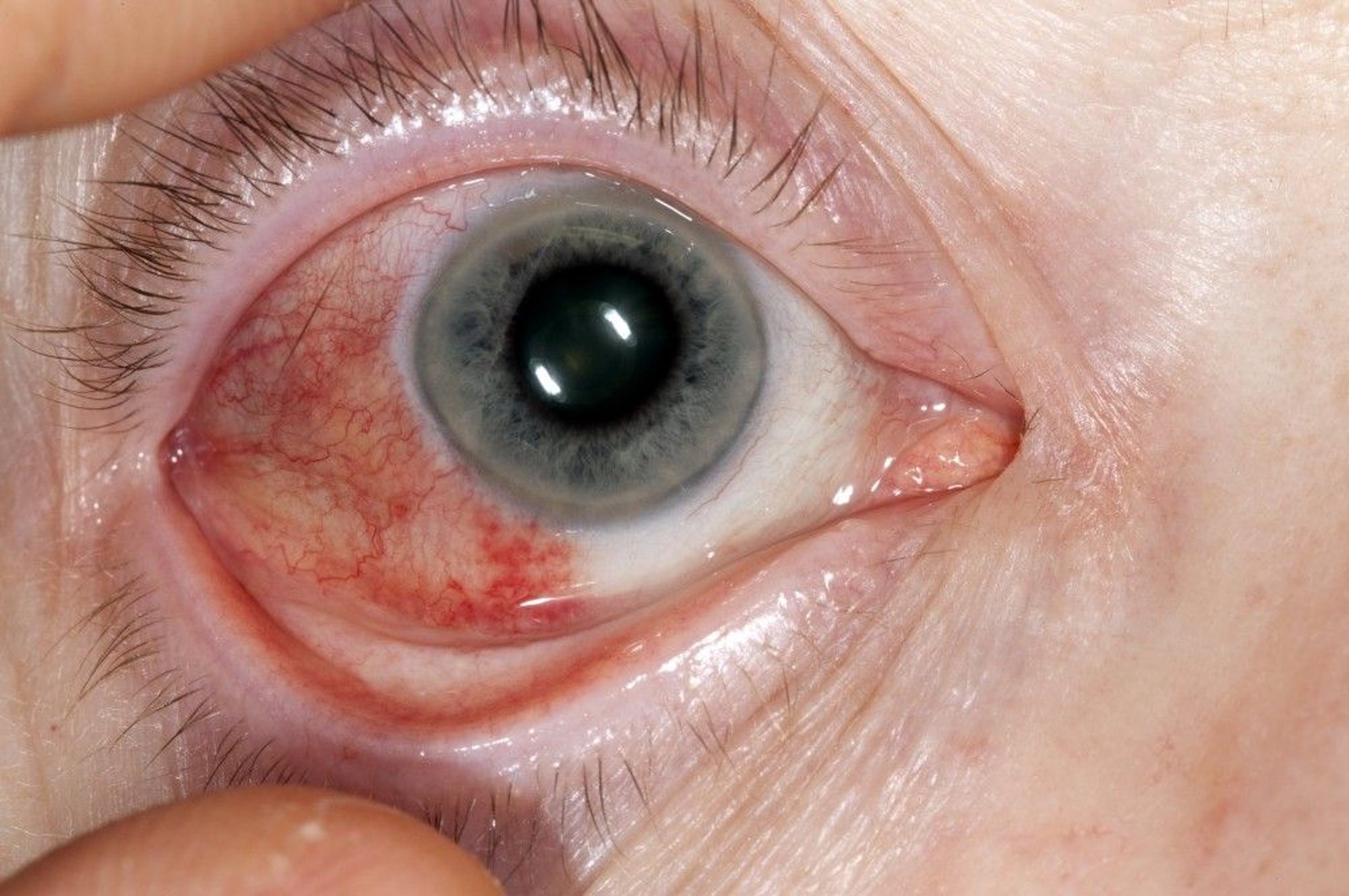Topic Resources
The episclera is a thin vascular membrane between the conjunctiva and the sclera.
Episcleritis occurs in young adults, more commonly among women. It is usually idiopathic; it can be associated with systemic rheumatic diseases in up to 36% of cases (1). (See also Overview of Conjunctival and Scleral Disorders.)
Mild irritation occurs. Additionally, a bright red patch is present just under the bulbar conjunctiva (simple episcleritis). A hyperemic, edematous, raised nodule (nodular episcleritis) may also be present. The palpebral conjunctiva is normal.
DR P. MARAZZI/SCIENCE PHOTO LIBRARY
Episcleritis is distinguished from conjunctivitis by hyperemia localized to a limited area of the globe, much less lacrimation, and no discharge. It is distinguished from scleritis by lack of photophobia and lack of severe pain.
The condition is self-limited. If the review of systems does not suggest an underlying cause, unless the episode recurs, then a diagnostic assessment for systemic disorders is not routinely warranted.
General reference
1. Akpek EK, Uy HS, Christen W, Gurdal C, Foster CS. Severity of episcleritis and systemic disease association. Ophthalmology. 1999;106(4):729-731. doi:10.1016/S0161-6420(99)90157-4
Treatment of Episcleritis
Topical lubrication
Topical anti-inflammatory therapy (eg, corticosteroids)
Oral nonsteroidal anti-inflammatory drugs (NSAIDs)
Topical lubricating drops are typically used for patient comfort.
A short course of topical corticosteroids (eg, fluorometholone 0.1% or prednisolone acetate 1% drops) or an oral NSAID usually shortens the episode. Corticosteroids are usually prescribed by an ophthalmologist (A short course of topical corticosteroids (eg, fluorometholone 0.1% or prednisolone acetate 1% drops) or an oral NSAID usually shortens the episode. Corticosteroids are usually prescribed by an ophthalmologist (1).
Long-term use of topical vasoconstrictors (eg, tetrahydrozoline, brimonidine tartrate) is discouraged because regular use can worsen erythema due to rebound vasodilation.Long-term use of topical vasoconstrictors (eg, tetrahydrozoline, brimonidine tartrate) is discouraged because regular use can worsen erythema due to rebound vasodilation.
Treatment reference
1. Jabs DA, Mudun A, Dunn JP, Marsh MJ. Episcleritis and scleritis: clinical features and treatment results. Am J Ophthalmol. 2000;130(4):469-476. doi:10.1016/s0002-9394(00)00710-8
Drugs Mentioned In This Article



